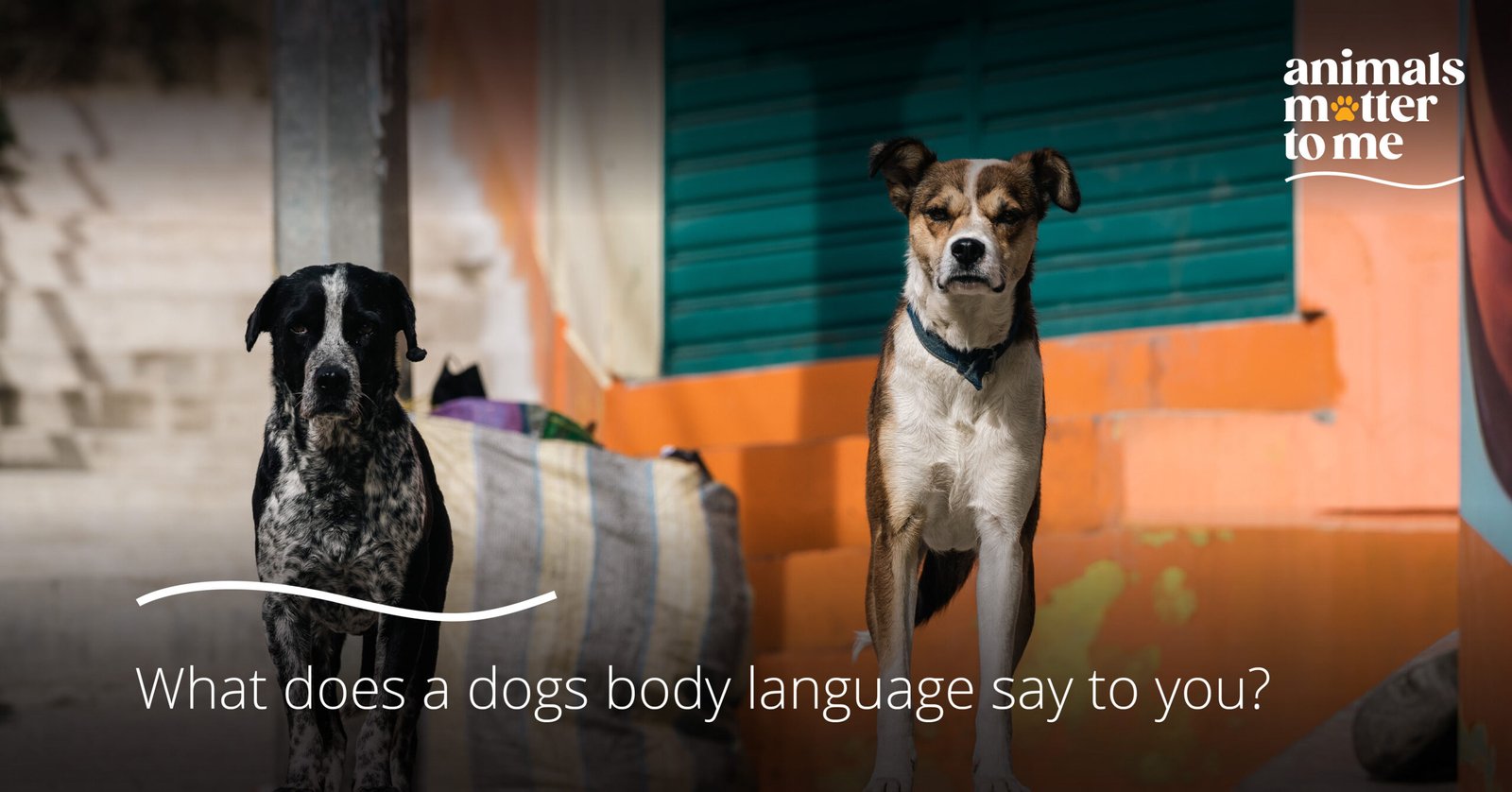When we sit down to chat with our dogs, it’s usually a one-way conversation to say the least. However, we can learn how to recognise and interpret a dog’s body language to better understand what any dog may be telling us. By interpreting body language, you can assess a dog’s attitude and possibly even predict their next move. To ‘read’ a dog, you must look at all the separate physical cues together to size up what the entire dog’s body language is saying.
Here are some head-to-tail signs to note when interacting with any dog
1. The tail

The wagging of a dog’s tail is the most misinterpreted signal. We assume that a wagging tail always means a happy dog, however, the wagging tail can mean a lot of emotions based on its position and movement. All a wagging tail means is that the dog is emotionally aroused, be it from excitement or even frustration. The faster the wagging, the more aroused the dog. A long, slow, side-to-side tail sweep where the whole body wags is indicative of a happy dog, one that’s greeting you. A faster twitch-like wag indicates a higher level of arousal and possibly in a negative way.
The direction of the tail also tells us something. A rightward wagging is more positive while tails are wagged more to the left when dogs face something negative. A helicopter wagging, without a doubt, is a happy wag. Additionally, the higher the tail during a wag, the more assertive a dog is. Dogs with their tails pointing down to the ground or even tucked between their legs are feeling fear and stress and are gearing up to fight whatever they fear.
2. Ears

Dog ears come in all shapes and sizes, allowing some dogs to better communicate using them. However, the rule remains the same for all. Calm, contented dogs tend to relax their ears in a position that is natural to them. When alert, or if feeling aggressive or dominant, a dog will raise their erect/tense ears higher on their head and point them in the direction of their interest. If a dog has its ears pulled flat against its head, the dog is likely fearful, worried or submissive.
3. Eyes

We can broadly categorise a dog’s eyes into soft or hard. Soft eyes that indicate a calm or happy dog have relaxed lids and sometimes look like they’re squinting. The opposite is hard eyes where the eyes seem to go cold. These indicate a negative state of mind, and you’ll know them when you see them. The dog might be guarding a toy or feeling aggressive. A hard stare, where the dog looks intently at something, especially for a long time, usually signals a threat. Don’t misunderstand your dog’s looking away as its stubbornness or ignoring you. It’s a way of expressing their discomfort with the situation. When dogs feel stressed, they will pointedly look away and avoid eye contact.
4. Facial expressions

Dogs and humans have the same expressions but mean different things. A yawning dog means they’re stressed and use yawns as a means to calm themselves as it lowers their blood pressure. However, a dog may yawn back at you if you do so because yawning is contagious among dogs, just as it is in humans.
A dog may smack its lips after a delicious meal but also does it when it feels anxious to signal discomfort.
5. Mouth

A relaxed dog will likely have its mouth open and may be panting, with no facial or mouth tension. The corners of its mouth may be turned upward slightly. A fearful or tense dog will generally keep its mouth closed, and may pull its lips back at the corners. It may also be panting rapidly. A panting dog who suddenly closes its mouth in response to something in the environment may also be indicating increased stress. Drooling when no food is present can also be a sign of extreme fear or stress. Teeth do not always mean aggression. Some dogs display a “submissive grin” or “smile” where a dog shows its front teeth only.
Remember, none of these body language signals acts alone. They are all part of a package. So, when you read a dog, look at every signal the dog is using from the tail height to the eye shape. Your dog is “talking” to you all the time.




